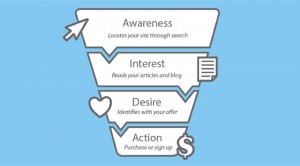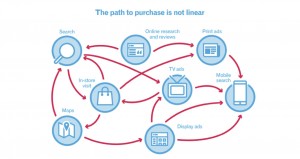Each digital marketing activity can be (and should be) classified as either a direct response or an engagement driver. This is important because otherwise if you classify marketing activities incorrectly or, worse yet, not at all, you run the risk of assessing the performance of the marketing activities against the wrong metrics or, at best, unfairly.
Direct response drivers are marketing activities that are designed to drive trackable revenue. These are most commonly found late in the purchase funnel — e.g., paid search, affiliate and email marketing. These digital marketing activities or channels are effective at driving revenue that’s trackable under today’s most commonly used attribution models.
Engagement activities are those marketing campaigns that are designed to drive engagement and create awareness, and are found at the top of the purchase funnel. Examples of engagement marketing activities include banner ads (including programmatic) and social media (including boosting a post or advertising to custom audiences). These online engagement marketing tactics can be compared to offline point-of-sale signage or print advertising activities.
Measuring direct response marketing activities should include key performance indicators like return on investment, conversion rate, CPA and average order value. Proper engagement metrics would then be clickthrough rate, cost per click and cost per engagement (e.g., follow, like, share, comment).
As such, if you measure an engagement marketing activity — e.g., a banner ad against direct response metrics like ROI — engagement marketing activities will always underperform. The mistake would be to cut them from your budget entirely on this basis. They won’t effectively drive revenue that you can easily track today. They are, however, an important part of the marketing mix, as driving awareness and getting your product or service top of mind and in the customer’s consideration set are important components and precursors to driving revenue.
Since the customer journey isn’t linear (it’s across multiple devices) and has a consideration period or research period that proceeds purchase, an effective marketing campaign should include a mix of both direct response and engagement-driving marketing activities.
Amy Madonia has led e-commerce and digital marketing efforts for many brands over the course of her 17-year career. With a record that includes leading and growing e-commerce businesses for brands including Temptu, Nautica, New York & Company, Michael C. Fina, Wrangler and Hanes, Amy’s responsibilities have typically included site merchandising, content and promotion development, analytics, social media, mobile, and remarketing.



